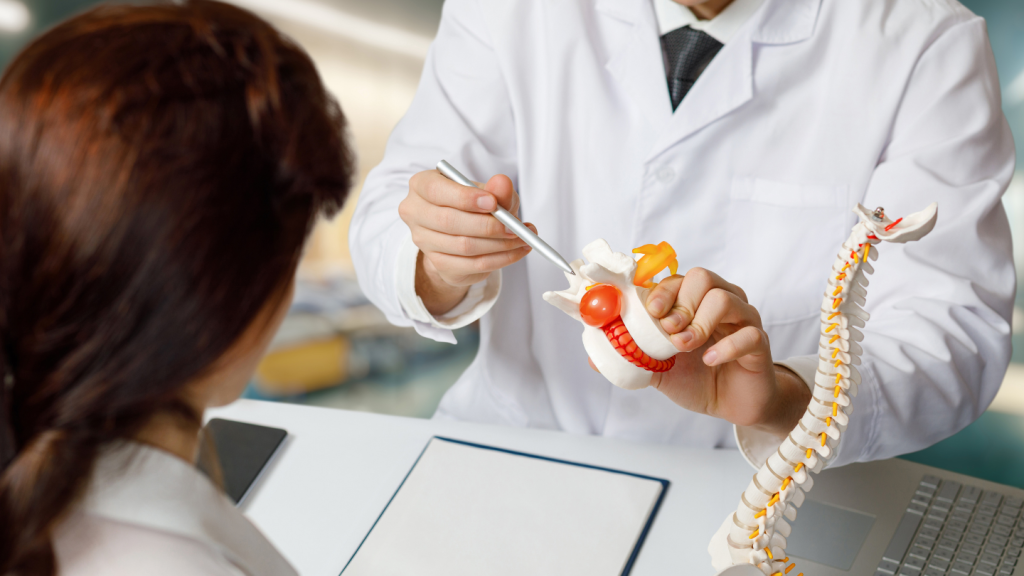
How Soon Can I Walk After Hernia Surgery: A Guide to Post-Operative Recovery
One of the most common questions patients have is about walking after hernia surgery. While rest is crucial, gentle movement plays a key role in recovery. Walking helps improve circulation, reduces the risk of blood clots, and supports bowel function. Knowing when to start, how much to walk, and what pace is safe can make recovery smoother and less stressful.
Why Walking Matters After Hernia Surgery
Many people wonder can I walk after hernia surgery without causing harm. The answer is yes; walking is encouraged almost immediately after the procedure. Light movement promotes blood flow, prevents stiffness, and lowers the risk of complications. For those who experience constipation after surgery, walking also helps stimulate the digestive system, making it easier to pass stools and relieve discomfort. Recovery is even more effective when paired with proper nutrition, such as knowing what diet to have after hernia surgery, to support healing tissues.
Walking after hernia surgery should be viewed as a therapeutic activity, not an exercise routine. The goal is steady progress without putting pressure on the surgical site.
When Can I Walk After Hernia Surgery?
Patients frequently ask when can I walk after hernia surgery or how soon can I walk after hernia surgery. In most cases, walking begins within a day or two after the operation. The first steps should be slow and short, often inside the hospital or at home. Over time, patients can gradually increase distance and pace as comfort allows.
If the procedure was minimally invasive, such as laparoscopic repair, recovery tends to be quicker. Patients often ask how soon can I walk after laparoscopic hernia surgery, and the answer is usually within 24 hours, though the pace should still remain gentle. For open surgery, recovery may take longer, but light walking is still encouraged early on. Having clarity on the most common questions about umbilical hernia surgery can also help set realistic expectations for post-surgical movement.
Walking After Inguinal Hernia Surgery
Walking after inguinal hernia surgery follows similar guidelines. Since inguinal repairs involve the groin area, stiffness and discomfort can make movement challenging at first. Short walks around the house are typically recommended in the first few days, with gradual progression to outdoor walks. Gentle movement reduces swelling, prevents clot formation, and helps patients regain mobility more quickly.
How Far Can I Walk After Hernia Surgery?

It’s natural to ask how far can I walk after hernia surgery. In the beginning, walks should be brief; just a few minutes at a time. Several short walks throughout the day are more beneficial than one long session. Over the course of a few weeks, patients can extend walks to 15–30 minutes, provided there is no pain or strain.
Always listen to your body. If sharp pain, swelling, or fatigue occurs, it’s a sign to slow down or rest. Walking should feel supportive, not exhausting.
How Much Should I Walk After Hernia Surgery?
Another common concern is how much should I walk after hernia surgery. There is no fixed number of steps, but the general recommendation is to walk several times a day, starting with very short intervals. As healing progresses, the amount of walking can increase. By two to four weeks, many patients are comfortable walking longer distances at a steady pace. Guidance on how long the recovery time is after hernia repair surgery also provides a clear timeline for when activity levels can be safely increased.
Doctors often encourage light daily activity as opposed to long periods of bed rest. This balanced approach helps recovery without putting the surgical site at risk.
Managing Discomfort While Walking
Pain and soreness are normal after surgery, especially in the first week. For those asking how long to walk after hernia surgery without causing discomfort, the answer depends on tolerance. If pain increases during or after a walk, reduce distance and pace. Supportive clothing, proper posture, and comfortable footwear can help minimize strain. Practical adjustments like these complement recommendations on how to sleep after umbilical hernia surgery to ensure overall comfort during the healing process.
Patients recovering from open surgery may feel more discomfort than those who had laparoscopic repair. Pain management strategies, including medication when prescribed, can make walking more tolerable.
How Soon Can I Walk After Hernia Surgery? A Recovery Timeline
Here is a general guide for walking after hernia surgery:
- Day 1–2: Short, slow walks around the room or home.
- Week 1: Several light walks each day, focusing on comfort.
- Weeks 2–4: Longer walks outdoors, gradually increasing pace.
- Weeks 4–6: Return to moderate walking and daily activities.
- After 6 weeks: Most patients can resume normal walking routines.
For laparoscopic procedures, progress may be slightly faster, while open surgeries may require more patience.
Can Walking Cause Complications?
Patients often worry that too much activity might harm recovery. While walking is generally safe, overexertion can lead to pain, swelling, or fatigue. If there are signs of infection, bleeding, or severe discomfort, walking should be paused until medical advice is given. It’s important to note that walking does not affect stitches or mesh placement when done gradually and carefully.
Combining Walking With Other Gentle Exercises

While walking is the foundation of recovery, other light activities can help strengthen muscles and prevent stiffness. Breathing exercises, stretching, and simple leg movements may be introduced under a doctor’s guidance. However, heavy lifting, running, or strenuous workouts should be avoided until cleared by a surgeon.
Read More: Can You Safely Exercise With a Hernia?
When to Seek Medical Attention
Not all discomfort is normal. Contact your doctor if walking after hernia surgery leads to:
- Severe or increasing abdominal pain.
- Swelling, redness, or fever.
- Difficulty standing or moving.
- Sharp pain at the incision site that does not improve with rest.
Prompt attention ensures potential complications are treated before they worsen.
Final Thoughts
Walking after hernia surgery is one of the most effective ways to promote healing. Most patients can begin light walking within a day or two, with gradual increases over several weeks. Whether it’s walking after inguinal hernia surgery or laparoscopic repair, the key is slow progress, patience, and listening to your body. Movement should support recovery, not strain it.
Safe recovery requires more than just surgery; it takes guided rehabilitation. Ascension Saint Agnes Bariatric Surgery provides expert care, helping patients navigate every stage of recovery, from the first steps after surgery to long-term lifestyle support. Their team ensures that walking and other daily activities are safely reintegrated into life after hernia repair. Additionally, they specialize in post-operative care for patients undergoing bariatric revision surgery, including Roux-en-Y gastric bypass and sleeve gastrectomy. They also address conditions such as GERD reflux and provide upper endoscopy services to monitor digestive health. For more information or to get started, contact us today.
Frequently Asked Questions
How soon can I start walking after hernia surgery?
Most patients can begin light walking within 24 to 48 hours after surgery. Early movement promotes circulation, reduces stiffness, and helps prevent blood clots without straining the incision.
How much should I walk each day after hernia surgery?
Start with short, slow walks several times a day, just a few minutes at a time. Gradually increase distance and pace as comfort improves. Avoid pushing through pain or fatigue.
Can walking cause complications after hernia surgery?
No, walking is safe and recommended when done moderately. However, overexertion can cause swelling or soreness. If you experience sharp pain, bleeding, or redness, contact your surgeon immediately.
When can I resume normal walking or exercise routines?
Most patients return to regular walking by 4–6 weeks post-surgery. Strenuous activities, heavy lifting, or running should be avoided until your doctor confirms complete healing.
What can help reduce pain while walking after hernia surgery?
Wearing comfortable clothing, maintaining proper posture, and using prescribed pain medication as directed can ease discomfort. Take small steps and rest often to avoid strain.